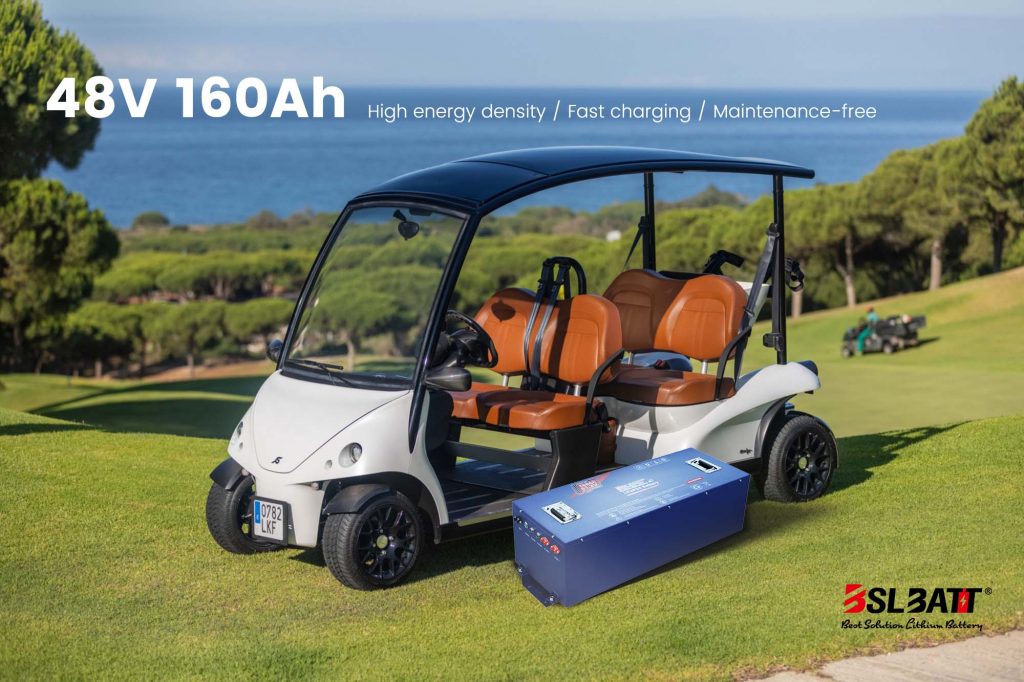Industry Application
Product Type
What Is a Deep Cycle Battery? – Lithium Battery Guy

Batteries are just batteries, right? They store energy and give it off as needed. But the truth is, while all batteries store energy, there are significant differences in how that works for different types of batteries, and which of those batteries are most effective for different applications. Deep cycle batteries, for instance, may look a lot like car batteries to people who aren’t familiar with them, but in reality, they’re quite different. Before choosing a battery type, consider what you will be using it for. One battery type will be more suited to your specific purpose than another. In this post, we’ll dive into the world of deep cycle batteries. We’ll learn what they are and what they are used for. DEEP CYCLE BATTERY DEFINITIONA lithium deep cycle battery is a lead battery designed to provide sustained power over a long period and run reliably until it is 80% discharged or more, at which point it needs to be recharged. It is important to note that although deep cycle battery can be discharged up to 80%, most manufacturers recommend not discharging below 45% to extend the life of the battery. The level of discharge is the “deep cycle” and stands in contrast to other types of batteries that provide only short bursts of energy before they need to be recharged. To be specific, a starter battery discharges only a tiny percentage — usually 2 to 5% — each time it is used. There are different types of deep cycle batteries such as: ● flooded batteries, ● gel batteries ● AGM batteries (Absorbed Glass Mat); and ● More recently – lithium-ion All have different manufacture processes. Among conventional lithium deep cycle battery, the flooded battery is the most common, which is similar to the standard lead-acid battery in your car. The gel batteries, as the name suggests, have a gel-like substance in them and the AGM batteries consist of acid suspended in a glass mat separator. While Flooded, AGM and gel batteries are used most frequently in off-grid scenarios, next-generation lithium-ion battery systems will experience significant uptake among grid-connected households in Australia – and off-grid too. Starting, Marine, or Deep-Cycle BatteriesStarting (sometimes called SLI, for starting, lighting, ignition) batteries are commonly used to start and run engines. Engine starters need a very large starting current for a very short time. Starting batteries have a large number of thin plates for maximum surface area. The plates are composed of a Lead “sponge”, similar in appearance to a very fine foam sponge. This gives a very large surface area, but if deep cycled, this sponge will quickly be consumed and fall to the bottom of the cells. Automotive batteries will generally fail after 30-150 deep cycles if deep cycled, while they may last for thousands of cycles in normal starting use (2-5% discharge). Deep cycle batteries are designed to be discharged down as much as 80% time after time and have much thicker plates. The major difference between a true deep cycle battery and others is that the plates are SOLID Lead plates – not a sponge. This gives less surface area, thus less “instant” power like starting lithium deep cycle battery need. Although these can be cycled down to 20% charge, the best lifespan vs cost method is to keep the average cycle at about 50% discharge. Unfortunately, it is often impossible to tell what you are really buying in some of the discount stores or places that specialize in automotive batteries. The golf cart battery is quite popular for small systems and RV’s. The problem is that “golf cart” refers to a size of battery case (commonly called GC-2, or T-105), not the type of construction – so the quality and construction of a golf cart battery can vary considerably – ranging from the cheap off-brand with thin plates up to true deep cycle brands, such as BULLS POWER, Deka, Trojan, etc. In general, you get what you pay for. Marine batteries are usually a “hybrid”, and fall between the starting and deep-cycle batteries, though a few (Rolls-Surrette and Concorde, for example) are true deep cycle. In the hybrid, the plates may be composed of Lead sponge, but it is coarser and heavier than that used in starting batteries. It is often hard to tell what you are getting in a “marine” battery, but most are a hybrid. Starting batteries are usually rated at “CCA”, or cold-cranking amps, or “MCA”, Marine cranking amps – the same as “CA”. Any battery with the capacity shown in CA or MCA may or may not be a true deep-cycle battery. It is sometimes hard to tell, as the term deep cycle is often overused – we have even seen the term “deep cycle” used in automotive starting battery advertising. CA and MCA ratings are at 32 degrees F, while CCA is at zero degrees F. Unfortunately, the only positive way to tell with some batteries is to buy one and cut it open – not much of an option. These are deep cycle batteries — the marathon runners of the battery world. Rather than a short burst of lots of power, they supply a lesser amount of power but for a much longer period of time. Here the batteries are used to run the vehicle instead of gasoline. Dual-purpose batteries handle both starting and cycling making them an excellent choice when you are working with a small footprint. They deliver powerful cranking amperage for easy starting, and low amp draws service for reliable auxiliary power. A perfect example of this would be BSLBATT’s LFP series of lithium batteries that are designed to handle getting you started and keeping you running. Discharge CapabilityAs mentioned, deeply discharging a starter battery will hurt its performance. However, deep cycle batteries not only are designed to put out power for a long period of time but also they can discharge much more of their stored energy. The amount you can safely discharge varies from battery to battery. Some batteries can only handle discharging 45% of their energy reserves, whereas others can safely discharge up to 100%. Just be sure to check the manufacturer’s recommendation for your specific battery. Uses of Deep Cycle Batteries We’ve already touched on the fact that familiar car batteries are starter batteries. So what are deep cycle batteries used for? In general, for anything that needs continuous power for longer periods of time. Examples of items needing long-term power output: ● Electric golf carts ● Electric floor cleaning machines ● Electric scissor lifts ● Electric wheelchairs ● Electric scooters ● Electric forklifts ● Recreational Vehicles ● Trolling motors on boats ● Navigational devices on a boat (when the main motor is inactive) ● Renewable Energy systems Types of Deep Cycle BatteriesThere are also a few types of deep cycle batteries. While they perform the same function, the materials used to build the battery vary. Thus, the different types of deep cycle batteries each have their own pros and cons. Let’s look at the main ones here. Flooded Lead-AcidThis is the oldest type of battery that is still in use. Also called a wet cell, the name comes from the battery having a liquid electrolyte inside, consisting of water and sulfuric acid. If you’ve ever worked on an older car, you may be familiar with having to open the tabs at the top to add water to the battery on occasion. With deep cycle, flooded lead-acid batteries, adding water is needed more frequently. Because of the liquid, these batteries must stay upright at all times. They also require good ventilation. Batteries produce hydrogen gas and it must have a way to escape. It is not uncommon for the electrolyte to spit out of the vents during charge, leaving acid residue on the battery cover and often even on the battery tray and vehicle chassis. Overall, flooded batteries require the most maintenance including; adding water, cleaning acid residue from battery covers, terminals, and surroundings. These types of batteries are also quite heavy when considering the ratio of battery weight to the amount of energy they provide. For these reasons and more, their popularity is waning. Valve Regulated Lead-Acid (VRLA) – Gel and AGMGel and AGM batteries are other types of lead-acid deep cycle batteries, but with a big improvement. They don’t have free-flowing liquid electrolyte in them and therefore don’t require any addition of water. They are more expensive though and often don’t last as long as flooded batteries in more demanding applications. Instead, Gel batteries use a gelled electrolyte and AGM batteries use an electrolyte absorbed in glass matt. If they are used and charged properly, they won’t release any gases, but in the event they over-pressure, the safety valve will open and release the buildup. As such, they don’t have to remain upright and they virtually eliminate any spillage, cutting down on the corrosion problems common with the flooded variety. They are very popular for use in boats, recreational vehicles and more. Lithium-IonLithium-ion batteries are quite possibly the wave of the future when it comes to deep cycle battery. They require no maintenance, can be discharged more deeply without affecting their lifespan, and charge much faster than other types of batteries. Because of the higher upfront cost, their popularity has not soared as quickly as you might expect. The fact that they last much longer than lead-acid batteries, can actually make them similar in price or even less expensive over the long run. And they have many other benefits over their lead-acid predecessors. They are lightweight, they provide their rated capacity at any rate of discharge, they do not get damaged from being left or operated in a partial state of charge, they provide more power throughout the discharge cycle and more. Choosing Your Battery Now you understand a little about lithium deep cycle battery. It’s obvious why they are important for many different applications. As a consumer or a battery dealer, it is essential to understand the different functions of battery types. While the deep cycle battery distinction may not mean much to the average person, the more you know the better you can make effective power storage choices for all your needs. Still, have questions about which battery to choose for your needs? Don’t hesitate to contact us! We’ll be happy to answer your questions and help you decide on the right battery. |
A Guide to Choosing the Best 48V Lithium Golf Cart Battery
Would it be worth investing in a 48V ...
10 Exciting Ways To Use Your 12V Lithium Batteries
Back in 2016 when BSLBATT first began designing what would become the first drop-in replacemen...
BSLBATT Battery Company Receives Bulk Orders from North American Customers
BSLBATT®, a China Forklift battery manufacturer specializing in the material handling indust...
Fun Find Friday: BSLBATT Battery is coming to another great LogiMAT 2022
MEET US! VETTER’S EXHIBITION YEAR 2022! LogiMAT in Stuttgart: SMART – SUSTAINABLE – SAF...
Looking for new Distributors and Dealers for BSL Lithium Batteries
BSLBATT battery is a fast-paced, high-growth (200% YoY ) hi-tech company that is leading the a...
BSLBATT to Participate at MODEX 2022 on March 28-31 in Atlanta, GA
BSLBATT is one of the largest developers, manufacturers, and integrators of lithium-ion batter...
What makes the BSLBATT the Superior Lithium Battery for your Motive Power needs?
Electric forklift and Floor Cleaning Machines owners who seek the ultimate performance will fi...





























